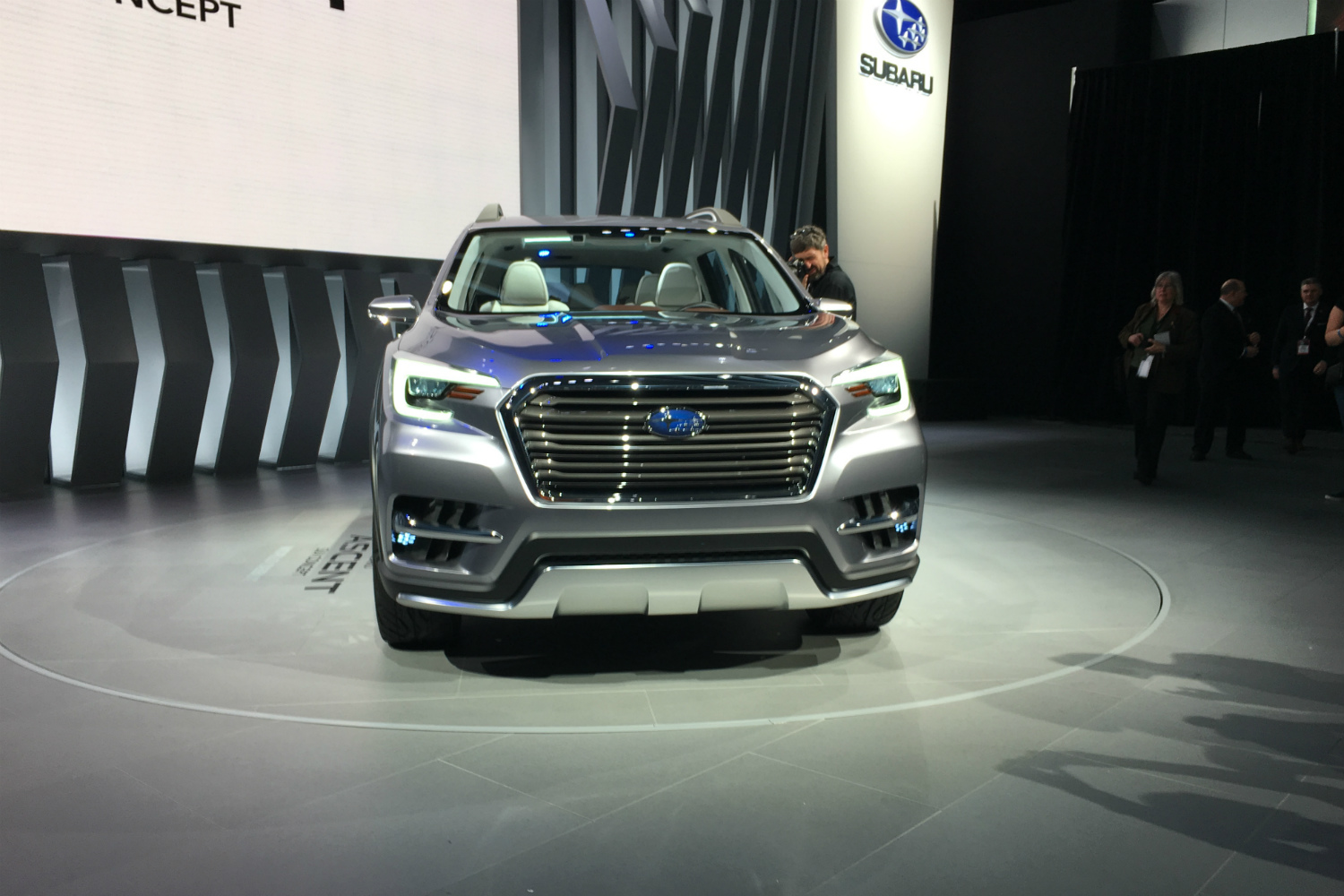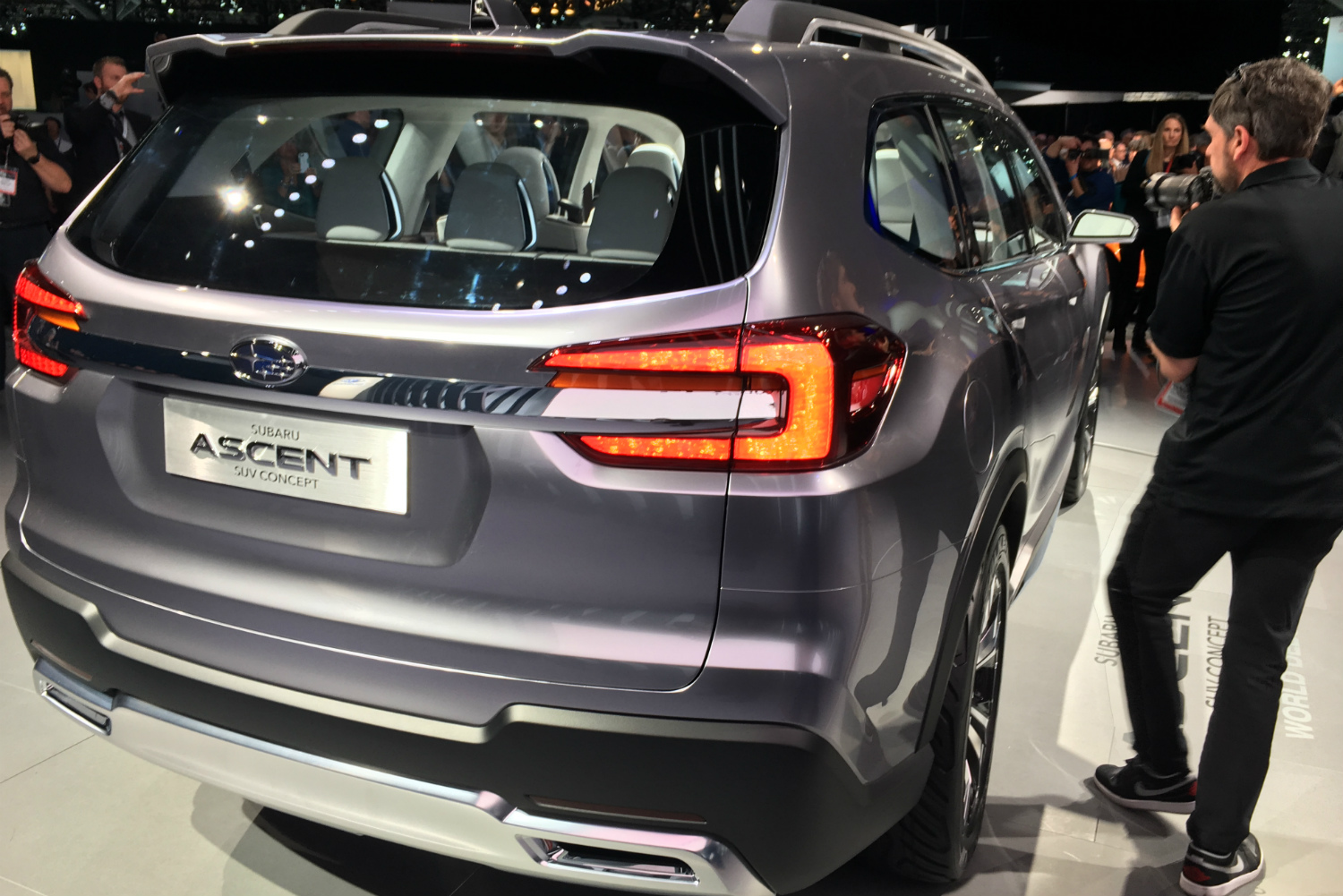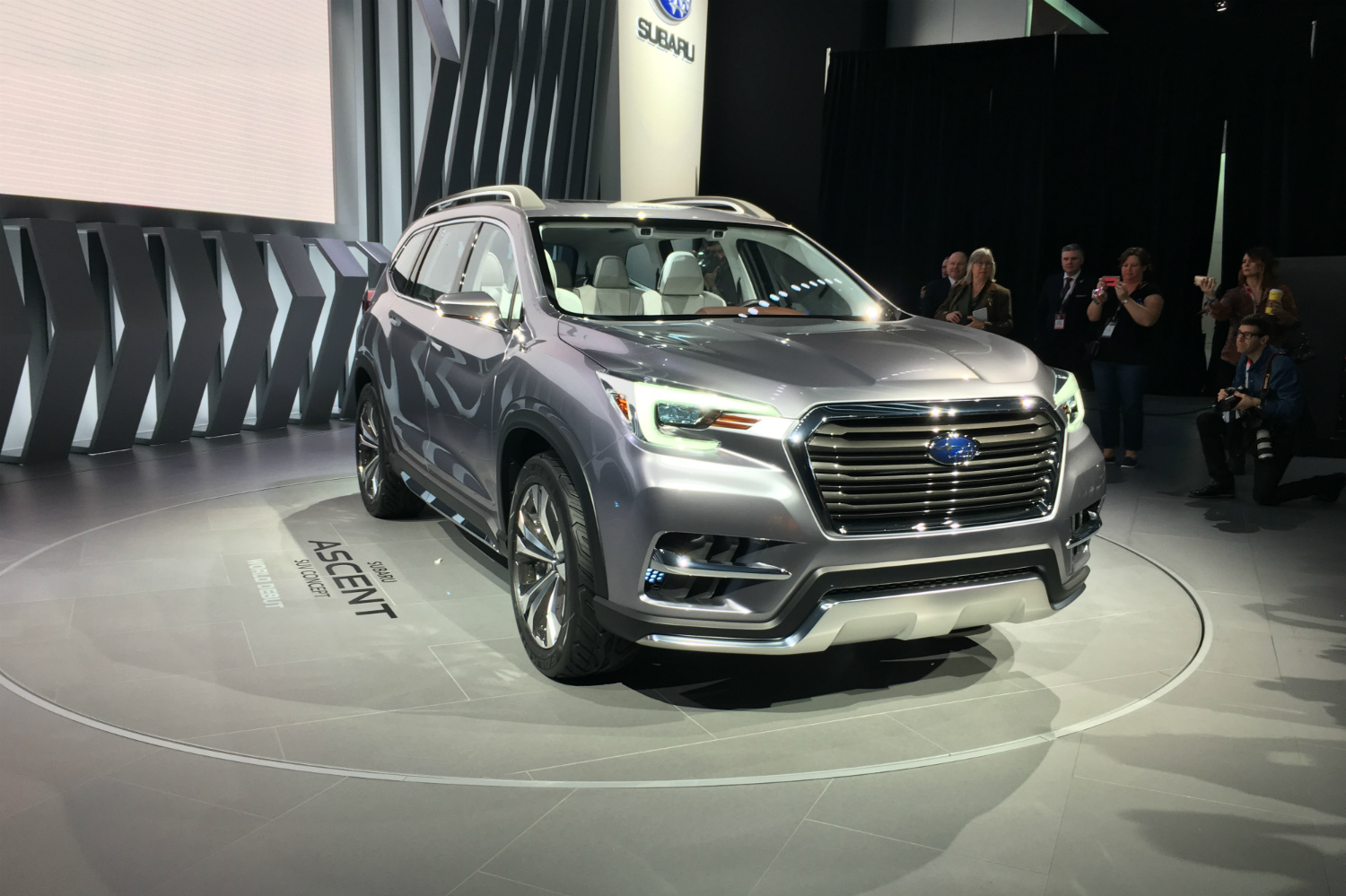It’s no secret that Subaru is developing a seven-seat SUV to take advantage of that burgeoning market segment, and at the 2017 New York Auto Show, the Japanese automaker confirmed it will be named the Ascent. That name was attached to a concept version of the SUV, which gives a good idea of what the production model will look like.
With so many utility vehicles trying to entice customers with the image of an active lifestyle, it’s hard to find an adventurous-sounding name that hasn’t been taken. Ascent is a pretty good one, although it’s perilously close to Ascender, the name of a lackluster, rebadged GMC Envoy sold years ago by Isuzu (remember Isuzu?).
The Ascent concept features an evolved version of the styling from the Viziv-7 concept that debuted at the 2016 Los Angeles Auto Show. The Ascent features the same chiseled fender flares and body sculpting, but with details that seem a bit more production ready. The overall appearance is of a plus-sized Forester. The seven-seat interior features an angled portrait-oriented central display screen that looks fairly ergonomic.
Power for the Ascent concept comes courtesy of a turbocharged, direct-injected boxer engine, which also powers the production model. Subaru didn’t provide any details on the engine, not even revealing whether it will have four or six cylinders. Vehicles in this class traditionally use six-cylinder engines, but automakers like Ford and Mazda have recently been experimenting with downsized four-cylinders to improve fuel economy.
The production version of the Ascent will ride on the new Subaru Global Platform, which was introduced with the 2017 Impreza compact. This platform will eventually underpin nearly every Subaru model, which is why it was designed to be flexible enough to work with both a compact car and the Ascent, which will be Subaru’s largest production model.
The Ascent will start production at Subaru’s Lafayette, Indiana, factory in 2018. It will be sold exclusively in North America, a market that can’t seem to get enough of three-row SUVs. Alongside the Ascent concept, Subaru is showing the updated 2018 Outback and redesigned 2018 Crosstrek in New York.












